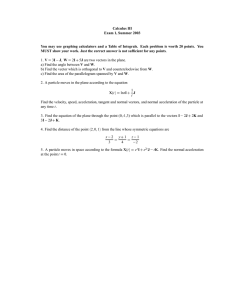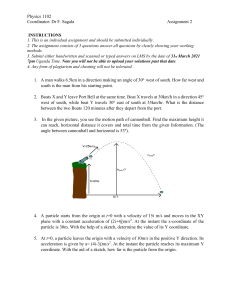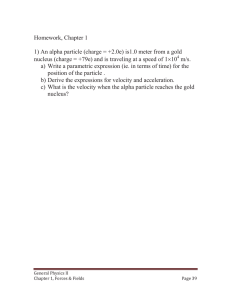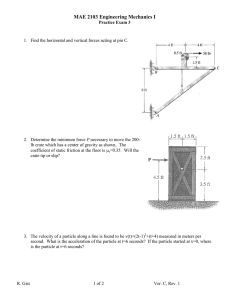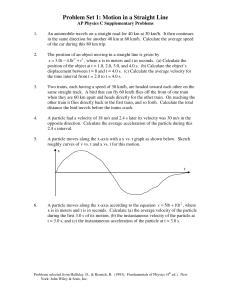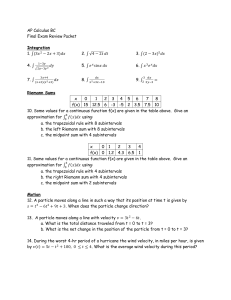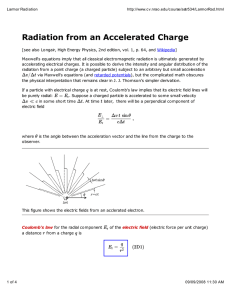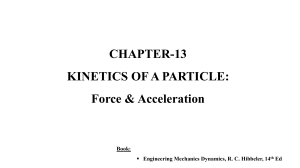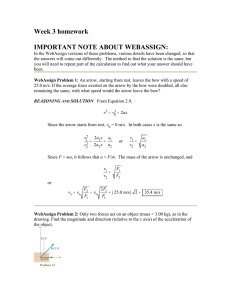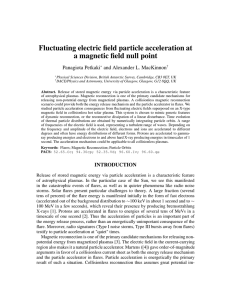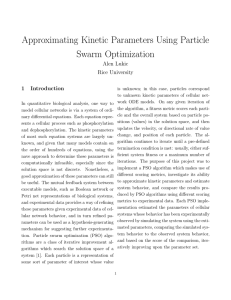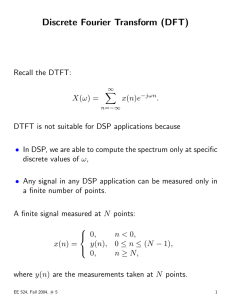advertisement
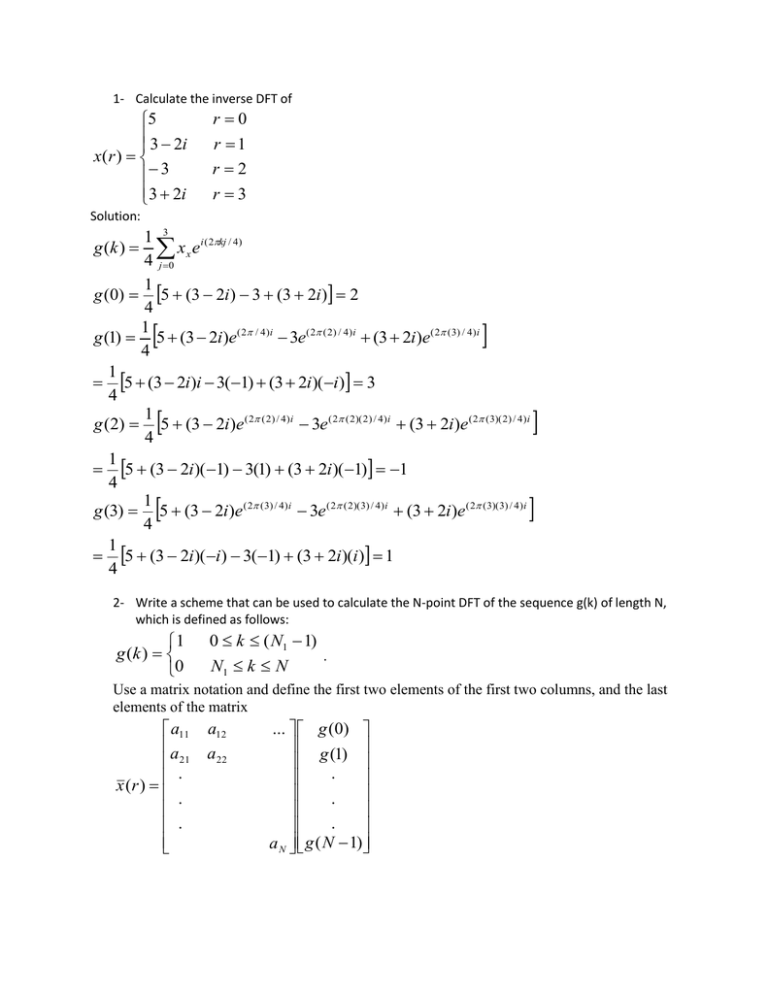
1- Calculate the inverse DFT of 5 3 2i x(r ) 3 3 2i r 0 r 1 r2 r 3 Solution: 1 3 g (k ) x x e i ( 2kj / 4) 4 j 0 1 g (0) 5 (3 2i ) 3 (3 2i ) 2 4 1 g (1) 5 (3 2i )e( 2 / 4)i 3e( 2 ( 2) / 4)i (3 2i)e( 2 (3) / 4)i 4 1 5 (3 2i)i 3(1) (3 2i)( i ) 3 4 1 g (2) 5 (3 2i)e ( 2 ( 2) / 4)i 3e ( 2 ( 2)( 2) / 4)i (3 2i)e ( 2 (3)( 2) / 4)i 4 1 5 (3 2i)( 1) 3(1) (3 2i)( 1) 1 4 1 g (3) 5 (3 2i)e ( 2 (3) / 4)i 3e ( 2 ( 2)( 3) / 4)i (3 2i )e ( 2 (3)( 3) / 4)i 4 1 5 (3 2i)( i) 3(1) (3 2i)(i) 1 4 2- Write a scheme that can be used to calculate the N-point DFT of the sequence g(k) of length N, which is defined as follows: 1 g (k ) 0 0 k ( N1 1) N1 k N . Use a matrix notation and define the first two elements of the first two columns, and the last elements of the matrix a11 a 21 . x (r ) . . a12 a22 ... g (0) g (1) . . . a N g ( N 1) N1 1 N 1 x (r ) e i ( 2kr / N ) g ( k ) e i ( 2kr / N ) g ( k ) (1) k 0 k 0 N 1 e i ( 2kr / N ) g ( k ) (0) k N1 N 1 e i ( 2kr / N ) k 0 1 x1 1 x 1 e 2 / N i 2 . . . . . . xN1 1 1 ... 1 1 . . 1 2 )( N1 1)( N1 1) / N i 1 e 1 2 , write a scheme that can be used to find for any x in[0,1] at any time x t t 0 given that if (0, t ) (1, t ) 0 and ( x,0) 1.0 . Discuss different ways that can be 3- If used to improve the accuracy. Divide the region between 0 and 1 in to N intervals such that xi i / N , for i=0..N. Now divide the region between 0 and T, where T is any time when a final solution is sought, in to M intervals such that t j j / N , for j=0..M. Start with the two pint formula to write i 1, j i ,i 2 i , j 1 i , j x t Where x 1 / N and t 1/ M . Rearrange the terms to get t t i , j 1 i 1, j (1 ) i , j for i=0,..,N, j=0,..,M. 2x 2x We can make increase N and/or M. We can also use a three point formula after j=1, or the five point formula after j=3. 4- Use a Galerkin method to solve the one dimensional Poisson equation ( x) 1 0 between x=0 and x=1 with ( 1) 1 and (3) 2 . Let x=4y-1, then y is in [0,1] for x in [-1,3] and dx=4dy. The equation then becomes: ( y ) 16 Let 3 c n 0 Then n yn 3 nc n 1 n y n1 N n(n 1)cn y n2 n2 The boundary conditions: (0) c0 1 (1) 1 c1 c2 c3 .. 2 c1 c2 c3 .. 1 3 1 1 n 2 0 0 n(n 1)cn y k 2 y n2 dy 16 y k dy for k=2,..,N. There are N-2 equations here and 1 from the BC, which make it N-14 eqns and N-1 unknowns. Take home component: The position of a particle at different times, between t=0 and t=1, is given in the table below. If the particle has an acceleration of -8/3 m/s2 at t=0, and we know that acceleration is a linear function of time, a- Find the velocity of the particle accurate to t 2 everywhere at the nodes. b-Use cubic spline interpolation to approximate the position at any time t, then find the velocity at the nodes and compare your results to part a. t x(t) 0 5 0.1 5.19 0.2 5.35 0.3 5.48 0.4 5.58 0.5 5.66 0.6 5.71 0.7 5.73 0.8 5.72 0.9 5.68 1 5.61 f i f i1 f i1 Ot 2 2t (1.1) f i1 f i1 2tf i, (1.2) f i1 f i1 2tf i (1.3) f i f i 1 f i 1 Ot 2 2t ( 2) First use equation (2) to find vi, i=1, .., 9. Next use equation (1.2) to find f 0 . Now use (1.1) to find f i for f i1 f i1 to find the slope and then use t f i1 f i mti to find f 9 and f 10 . Now use (1.3) to find f 10 . v is accurate to order of t 2 everywhere. i=1,..,9. Since f (t ) is a linear function of time use m

